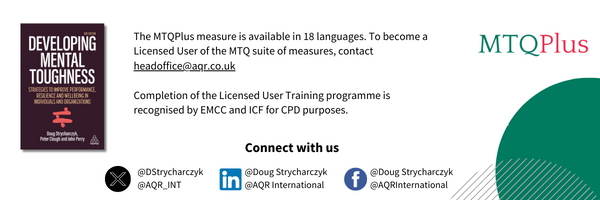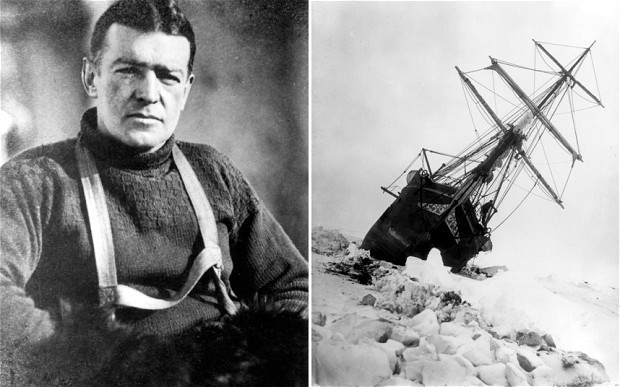How Your Mental Toughness Underpins Leadership
One of a series of mental toughness role models. Each features an individual who has demonstrated what Mental Toughness can mean. Mental Toughness embraces what is commonly known as Resilience and adds the Optimism components of Challenge and Confidence to create a more complete description of Mental Toughness.
Born in 1874, Shackleton was expected to follow his Father and become a doctor. Instead, Shackleton left school at 16 and joined the Merchant Navy. By the time he was 18, he became first mate and became a master mariner in just 6 years.
He joined polar explorer Sir Robert Scott in an expedition to the South Pole in 1901. This experience sparked a lifetime love of Antarctica and becoming the first man to reach the South Pole became a dream.
Unfortunately, in 1911, his dream was achieved by Norwegian Roald Amundsen. Despite this, he did not abandon his Antarctic ambitions and wrote of “little voices calling him south”.
In 1914, Shackleton left London on his ship the Endurance intending to be the first to successfully complete a trans-Antarctic expedition. It took 4 months to reach a whaling yard in South Georgia, where the crew had a few weeks of rest and replenishment for their journey ahead. On December 5th, they departed for Antarctica. It was the last time Shackleton and his crew would be on solid ground for two years.
Disaster struck when their ship became trapped and crushed in pack ice. Their only option was a long and difficult journey ahead of them if they were to reach safety. The crew lived on the floating ice for nearly 15 months hoping the pack ice would loosen its grip on the Endurance.
One can only imagine how the crew felt when she eventually sank on November 21st, 1915.
Stranded with no hope of rescue for Shackleton this was an extreme test of mental toughness and self-belief. He and his crew, in 3 small boats, made it to Elephant Island.
Leaving 22 members of his crew, Shackleton and 5 others then crossed one of the most treacherous seas in a glorified rowing boat. It took them 16 days to make the 1300km trip.
Crossing South Georgia over mountain ranges with no maps, two years after setting off, they made it back to the Whaling station so emaciated the whalers did not recognise them.
Shackleton then worked tirelessly to arrange a rescue boat to save his men on Elephant Island. Bearing in mind the world war at this time, although the British Admiralty refused to send a boat. The Chilean Admiralty did. Shackleton rescued his men in August 1916. Amazingly, all 28 members of his crew survived.
Shackleton organised another rescue boat for the remaining crew “the Ross Sea Party” who were laying out food depots for the Trans-Antarctic Expedition on the other side of Antarctica.
Looking more closely at the mental toughness components of this story we can see that it was these mental qualities that made any of it possible. Firstly, the resilience and positivity shown on this epic journey has resulted in this being one of the toughest quests (with a positive outcome) seen in the 20th Century.
The mental toughness model and the 4 C’s can help us to understand this story and tease out what it was that Shackleton possessed which enabled him to accomplish what he did.
Confidence in abilities
“Superhuman effort isn’t worth a damn unless it achieves results.” ― Ernest Shackleton
Shackleton’s confidence in his own ability to achieve his vision, despite setbacks, never failed him. These included seeing friends and crew members perish on previous expeditions, having someone else achieve your dream, developing a new dream and executing it, only for it to be crushed (literally) before your eyes.
Added to this, he was then faced with the responsibility of bringing his men home alive. His confidence in his own abilities to achieve his goals was the superhuman effort he referred to.
Interpersonal Confidence
“Loneliness is the penalty of leadership, but the man who has to make the decisions is assisted greatly if he feels that there is no uncertainty in the minds of those who follow him, and that his orders will be carried out confidently and in expectation of success.” ― Ernest Shackleton
Shackleton’s leadership abilities were the core reason all 28 men made it home safely from the Endurance expedition. His crew saw him as a beacon of strength and constantly engaged with them to keep their emotional and mental wellbeing in check.
Commitment: Goal Orientation.
“ I had a dream when I was 22 that someday I would go to the region of ice and snow and go on and on till I came to one of the poles of the earth” ― Ernest Shackleton
His sense of purpose is evident as is his approach to goal setting.
Commitment: Achievement Orientation
“Through endurance, we conquer.” ― Ernest H. Shackleton
Shackleton’s achievements in life speak for themselves in terms of committing to his goals and doing what it took to follow his dreams. No one said it better than the man himself.
Challenge: Risk Orientation
“Men Wanted: For hazardous journey. Small wages, bitter cold, long months of complete darkness, constant danger, safe return doubtful. Honour and recognition in case of success.”
― Ernest Shackleton
In Shackleton’s notice for employment on Endurance, he fully understood the challenge when describing the risk laden conditions these men would live in. He also saw the opportunity.
Challenge: Learning Orientation.
On his 3rd journey to Antarctica, he learned from his experiences, remaining undaunted about what lay ahead. He pursued his goals, encouraged others, for “honour and recognition”.
Control: Life control
“Difficulties are just things to overcome.” ― Ernest Shackleton
As things unravelled, he never gave up and declared “this is just my luck”. Even with Mother Nature dictating what he couldn’t control, he persevered and concentrated on what he could control and how to execute a plan of action to save his men.
Control: Emotional control
Shackleton showed great control of his emotions in front of his crew members. Aware that the hope they possessed was dependant on his behaviours and attitude. His crew members diaries often referred to how in tune he was with the group morale.
When selecting the small crew to join him on the journey to South Georgia, Shackleton was aware that one member was a bully. He knew this would be detrimental to the wellbeing of the group that were to be left behind. Showing a sensitivity to the emotions of the team
Shackleton knew his crew by name and details of their family background. Shackleton cared deeply for each individual. While he and the crew discarded all their worldly possessions, to prepare for the boat journey, he allowed one to keep his banjo in order to keep spirits raised.
Shackleton died in 1922 while on a return journey to Antarctica, surrounded by members of his crew. Possibly, one of the greatest leaders of the 20th century, who illustrated the relationship between mental toughness and true leadership – and what this can achieve.
We can’t all be Shackleton. But we can all develop that self-awareness about how we approach the challenges and opportunities in our lives. This is where the mental toughness concept and the MTQPlus measure matter.
We can nevertheless be the best version of ourselves that we can be.



